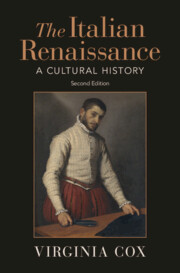Refine search
Actions for selected content:
3388697 results

Religion and Food
- Coming soon
-
- Expected online publication date:
- December 2025
- Print publication:
- 31 December 2025
-
- Element
- Export citation

Minority Religions, the Law, and the Courts
- Cases and Consequences
- Coming soon
-
- Expected online publication date:
- December 2025
- Print publication:
- 31 December 2025
-
- Book
- Export citation

The Language Teacher Education Casebook
- Coming soon
-
- Expected online publication date:
- December 2025
- Print publication:
- 31 December 2025
-
- Book
- Export citation

Probing the Consistency of Quantum Field Theory I
- From Nonconvergence to Haag's Theorem (1949–1954)
- Coming soon
-
- Expected online publication date:
- December 2025
- Print publication:
- 31 December 2025
-
- Element
- Export citation

Classical and Quantum Phase Space Mechanics
- Coming soon
-
- Expected online publication date:
- December 2025
- Print publication:
- 31 December 2025
-
- Element
- Export citation

The History of Contingency and Future-Oriented Thought
- Coming soon
-
- Expected online publication date:
- December 2025
- Print publication:
- 31 December 2025
-
- Element
- Export citation

Performing Urban Ecologies
- Coming soon
-
- Expected online publication date:
- December 2025
- Print publication:
- 31 December 2025
-
- Element
- Export citation

Germaine Tailleferre
- Coming soon
-
- Expected online publication date:
- December 2025
- Print publication:
- 01 April 2027
-
- Element
- Export citation

A Narratological Commentary on Herodotus' Histories
- Coming soon
-
- Expected online publication date:
- December 2025
- Print publication:
- 31 December 2025
-
- Book
- Export citation

Marriage and the Moral Imagination
- Coming soon
-
- Expected online publication date:
- December 2025
- Print publication:
- 31 December 2025
-
- Book
- Export citation

The Italian Renaissance
- A Cultural History
- Coming soon
-
- Expected online publication date:
- December 2025
- Print publication:
- 31 December 2025
-
- Book
- Export citation

Determining Provenance from Compositional Data
- Coming soon
-
- Expected online publication date:
- December 2025
- Print publication:
- 01 April 2027
-
- Element
- Export citation

Speech Act Theory
- Between Narrow and Broad Pragmatics
- Coming soon
-
- Expected online publication date:
- December 2025
- Print publication:
- 31 December 2025
-
- Element
- Export citation

Retail Marketing
- Shopper Behaviour and Retail Management at the Point-of-Purchase
- Coming soon
-
- Expected online publication date:
- December 2025
- Print publication:
- 31 December 2025
-
- Textbook
- Export citation

Unity through Particularism
- How Electoral Reforms Influence Parties and Legislative Behavior
- Coming soon
-
- Expected online publication date:
- December 2025
- Print publication:
- 31 December 2025
-
- Book
- Export citation

A Social and Economic History of the Theatre to 300 BC
- Coming soon
-
- Expected online publication date:
- December 2025
- Print publication:
- 31 December 2025
-
- Book
- Export citation

William Blake and Romantic Biology
- Evolution, Originality, and Organic Form
- Coming soon
-
- Expected online publication date:
- December 2025
- Print publication:
- 31 December 2025
-
- Book
- Export citation

Myths, History Wars, and Indigenous-Settler Relations in Canada and Other Settler States
- Coming soon
-
- Expected online publication date:
- December 2025
- Print publication:
- 31 December 2025
-
- Element
- Export citation

Supporting the Commitment
- Australian Army Logistics in South Vietnam, 1962–1973
- Coming soon
-
- Expected online publication date:
- December 2025
- Print publication:
- 31 December 2025
-
- Book
- Export citation

The Discriminative Lexicon
- Theory, Implementation in the Julia Package JudiLing, and Applications
- Coming soon
-
- Expected online publication date:
- December 2025
- Print publication:
- 31 December 2025
-
- Book
- Export citation
